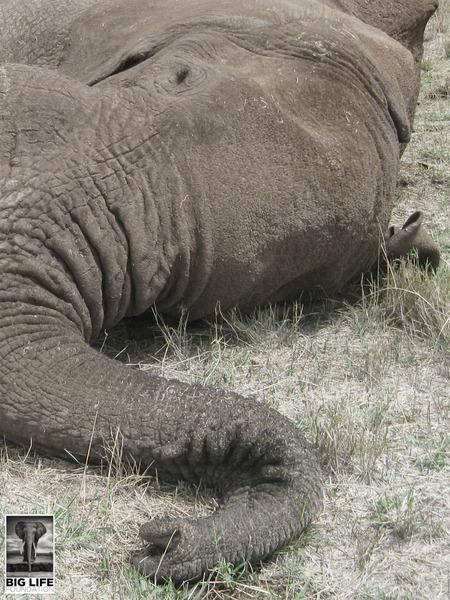
by Jeremy Goss, Big Life Kenya
In the dark world of wildlife poaching and black market ivory trading, information is everything.
Several weeks ago, Big Life deployed a team of three rangers and three informers to an area just beyond the edge of our normal operations, where we had heard that poachers were active. Their instructions were simple: wear civilian clothing, blend in and try to find out more.
After a few days it was clear that the gangs were still in the area but no longer setting up ambushes of their own. The six rangers and informers persevered, hoping for a sign. When it came, it was a worrying one. A set of boot prints overlaid on fresh elephant tracks, boots too expensive for the average local herder.
After a few days it was clear that the gangs were still in the area but no longer setting up ambushes of their own. The six rangers and informers persevered, hoping for a sign. When it came, it was a worrying one. A set of boot prints overlaid on fresh elephant tracks, boots too expensive for the average local herder.
The tracks were fresh and a mobile team of armed Big Life rangers was called in, as well as the Kenya Wildlife Service (KWS). By this time, the two men tracking the poachers had followed the tracks almost to their conclusion, but had pulled back for fear of an unprepared encounter.
With KWS and the armed rangers on the scene, the area was surrounded. The men approached carefully, only to confirm the worst of everyone’s fears.
The poachers had killed a bull elephant, about 20 years old, just 5 kms away from where Torn Ear had been killed. They had gotten away with the tusks. Knowing that Big Life and KWS would be close behind, the job was clearly done in haste, as approximately one third of the weight of the tusks remained in the skull.
The chase was on. The rangers took off at a run, hot on the trail of the gang of three poachers.
The poachers had picked up a bicycle and the rangers tracked this, as it was the likely carrier of the ivory. The track went onto community-inhabited land, and the job was immediately more difficult. The team stayed on the track, questioning locals as they went, but as the sun dipped below the horizon the bicycle track joined a road heavy with trucks and other traffic. The chase was over.
But the investigation continues. Through our informer presence in the communities we have some leads, but the ivory is gone and the chances of a successful arrest are slim. Another elephant lost, but thousands more to save. Our work goes on.
Perhaps with the Rapid Response Team in the area - the subject of our current fundraising appeal - we could have saved this elephant and Torn Ear.
To learn more, please go to https://biglife.org/news-events/big-life-elite-mobile-rapid-response-team
RELATED LINKS:
